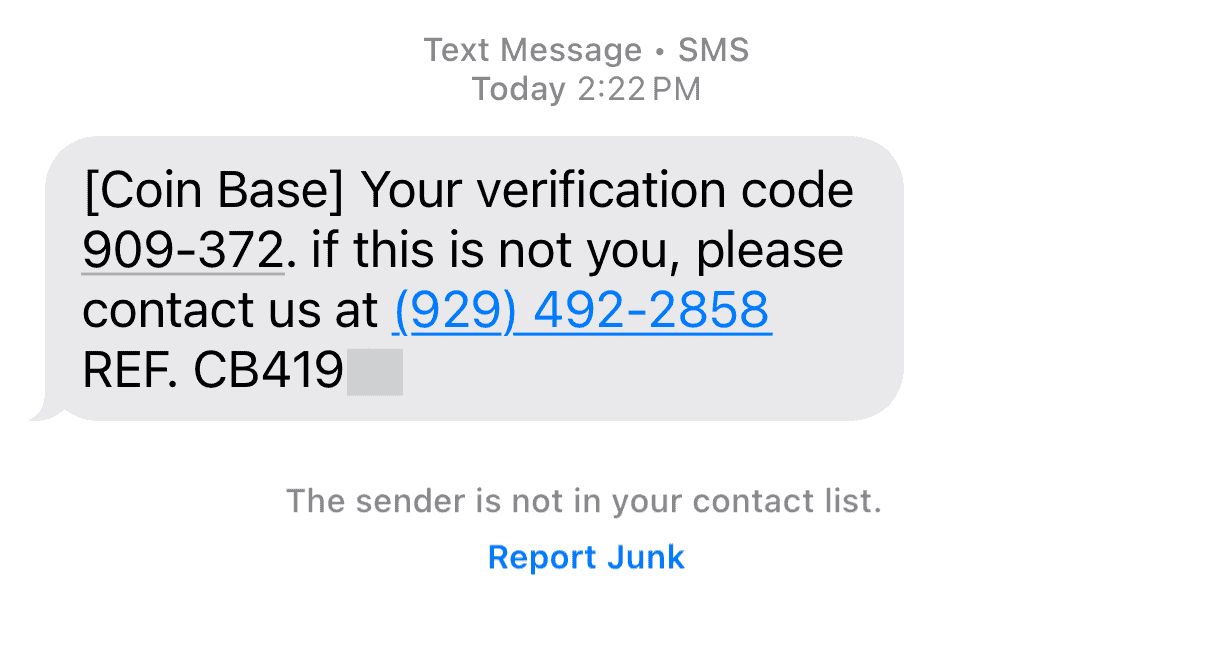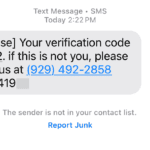Are you tired of your phone buzzing with unwanted messages? Spam texts are annoying and can be dangerous if they contain scams. They flood our phones daily, trying to trick us into giving away personal information or money. You can stop spam texts by using built-in phone features, third-party apps, and reporting tools that block unwanted messages before they reach you.
Most phones now have ways to filter out spam. On iPhones, you can turn on “Filter Unknown Senders” in your Messages settings. Android users can use Google Messages with its spam protection feature. Both options help keep your inbox cleaner without much effort on your part.
Beyond your phone’s basic tools, you can also register your number with the National Do Not Call Registry and use apps like RoboKiller or Hiya that block spam calls and texts. When you receive suspicious messages, don’t click links or reply – just block the number and report it through your carrier or the FCC.
Stopping Spam Texts
Spam texts remain a growing problem in 2025, with scammers using more advanced tactics—often powered by AI—to trick people into giving up personal or financial information. While text spam used to be a mild annoyance, it has now evolved into a serious threat that can cost victims hundreds or even thousands of dollars.
Here’s how you can stop spam texts and protect yourself more effectively:
1. Turn On Built-In Spam Filters
- On iPhone: Go to
Settings > Messages > Unknown & Spam, then toggle onFilter Unknown Senders. This will automatically place texts from people not in your contacts into a separate list. - On Android: Open your Messages app, tap the three-dot menu, go to
Settings > Spam Protection, and turn onEnable Spam Protection.
2. Use Your Carrier’s Free Tools or Apps
Most major carriers—like Verizon, AT&T, and T-Mobile—offer built-in services that block spam calls and texts. Many of these tools are free or included with your plan. Additionally, there are third-party apps like RoboKiller, SMS Shield, and TextKiller that use community reporting and AI filtering to block unwanted messages before they hit your inbox.
3. Report Spam Texts Immediately
- Forward the message to 7726 (which spells “SPAM” on your keypad). This alerts your carrier and helps them block similar messages from reaching other users.
- Use your phone’s built-in report feature in the Messages app to flag a message as spam.
4. Avoid Interacting With Suspicious Messages
- Never click on suspicious links or reply to unknown senders.
- If a message looks like it came from a legitimate company, visit their official website or contact them directly using a verified phone number—don’t trust the message itself.
5. Block and Opt Out When Possible
- Use your phone’s
Block Numberfeature to stop messages from repeat offenders. - Reply with “STOP” to marketing or political messages that are legally required to honor opt-out requests.
- Add your number to the Do Not Call Registry to reduce unsolicited marketing communications.
6. Watch for Smishing Attempts
“Smishing” (SMS phishing) messages often pretend to be from trusted sources—like banks, delivery companies, or government agencies. These messages usually create a sense of urgency and try to get you to click a link or provide information. Recognize the signs: bad grammar, strange URLs, or unfamiliar numbers are common giveaways.
7. Stay Updated With New Features
Android users now benefit from enhanced scam detection through AI-powered features in apps like Google Messages. These systems look for suspicious patterns and warn you in real-time before you interact with harmful content.
8. Reset or Change Your Number as a Last Resort
If the spam becomes unmanageable and none of the above methods work, you can contact your carrier to request a new number. This is a more drastic step, but it can provide a clean slate if your number has been heavily targeted.
By combining your phone’s built-in tools with reporting and third-party apps, you can greatly reduce the number of spam texts you receive—and protect yourself from falling victim to scams.
Key Takeaways
- Built-in phone filters and third-party apps can automatically block most spam texts before you see them.
- Never click links or reply to suspicious messages as this confirms your number is active to scammers.
- Report spam texts to your carrier and the FCC to help reduce unwanted messages for everyone.
Understanding Spam Texts
Spam texts are unwanted messages sent to your phone from unknown senders trying to trick you into sharing personal information or clicking dangerous links. These messages can appear legitimate but often contain suspicious offers, urgent requests, or alarming claims.
Types of Spam Texts
Spam texts come in several forms, each with different goals. Phishing messages pretend to be from trusted companies like banks or FedEx and ask you to click links or provide account details. They often claim there’s a problem with your account or a package.
Smishing (SMS phishing) texts use fear tactics, claiming your Social Security number has been compromised or your account has been locked. They typically include links to fake websites.
Robotexts are automated messages sent in bulk. These might offer fake prizes, gift cards, or incredible deals that seem too good to be true.
“Free gift” or sweepstakes texts promise rewards but require you to provide personal information or pay shipping fees to claim your “prize.”
Potential Risks
Responding to spam texts can lead to several serious problems. Clicking links in these messages might install malware on your phone that can steal your information or spy on your activities.
Scammers collect personal information like your name, address, and phone number to build profiles for identity theft. They may also trick you into sharing credit card numbers or Social Security numbers.
Some spam texts charge your phone bill when you respond or call back premium-rate numbers. These charges may not be noticed until your next bill.
Your phone number could be flagged as “active” if you respond, leading to even more spam texts and calls from other scammers who know you engage with messages.
Common Scammer Tactics
Scammers use psychological tricks to make you act quickly without thinking. Urgency is their favorite tool—messages claiming “Act now!” or “Your account will be closed today!” push you to respond immediately.
They often impersonate trusted companies or government agencies like banks, delivery services, or the IRS. The message might include official-looking logos and formal language to appear legitimate.
Many scams play on fear and anxiety. Texts about suspicious charges, account problems, or legal issues are designed to worry you into responding.
Some scammers research their targets on social media, creating personalized messages that mention friends’ names or recent purchases to seem more believable.
Identifying Spam Texts
Recognizing unwanted messages is the first step to protecting yourself from text message scams. Looking for specific warning signs can help you spot potential threats before they cause harm.
Red Flags in Messages
Spam texts often contain telltale signs that can alert you to potential scams. Messages with urgent demands for action like “Act now!” or “Limited time offer!” should raise suspicion. Be wary of texts containing grammatical errors or unusual spelling mistakes, as legitimate companies typically proofread their communications.
Messages asking for personal information such as your Social Security number, account credentials, or credit card details are almost always spam. Legitimate organizations rarely request sensitive information via text.
Short links (bit.ly, tinyurl, etc.) in unexpected messages are dangerous red flags. These links often lead to fake websites designed to steal your information or install malware on your device.
Offers that seem too good to be true generally are. Free gifts, unexpected prize winnings, or unusually large discounts from unknown senders are classic phishing tactics.
Researching Unknown Senders
When you receive texts from unfamiliar numbers, take time to verify the sender before responding. Search the phone number online to see if others have reported it as spam. Several websites track and report spam numbers based on user submissions.
Check if the text claims to be from a company you do business with. If so, don’t use the contact information provided in the suspicious message. Instead, look up the company’s official contact details separately.
Company names that are slightly misspelled (like “PayPa1” instead of “PayPal”) indicate phishing attempts. Scammers often use these subtle differences hoping you won’t notice.
If a message claims to be from a government agency, remember that most government entities don’t initiate contact through text messages about important matters.
Verifying with Trusted Sources
When in doubt about a text’s legitimacy, contact the supposed sender directly through official channels. Visit the company’s website by typing the URL directly into your browser rather than clicking links in texts.
Call customer service using the phone number from your account statement, the back of your credit card, or the company’s official website. Explain the message you received and ask if it’s legitimate.
Banking institutions and other services often list examples of their official communications on their websites. Check these resources to learn what legitimate messages from them typically look like.
Many companies have specific policies about how they contact customers. For example, some banks never send links in text messages, while others use consistent formatting in all communications.
If friends or family seem to be texting unusual requests, especially for money or gift cards, call them directly to confirm. Scammers sometimes impersonate people you know to gain your trust.
Prevention Strategies
Taking steps to stop spam texts before they start is more effective than dealing with them after they arrive. These strategies can help protect your phone from unwanted messages and keep your personal information safe.
Using Spam Filters
Most phones now come with built-in spam protection features that can catch and filter unwanted texts. On Android devices, open your Messages app, tap the profile icon, select “Messages Settings,” and turn on “Enable spam protection.” This setting helps identify potential spam before it reaches your inbox.
iPhone users can activate “Filter Unknown Senders” in Settings under Messages. This separates messages from people not in your contacts list, making spam easier to spot and ignore.
Many phone carriers also offer free spam-blocking tools. For some carriers, dialing #662# activates their spam blocker service. You can check if it’s working by dialing #787#, or turn it off with #632# if needed.
Blocking Unwanted Numbers
When you receive spam texts, blocking the sending number prevents future messages. On iPhone, open the message, tap the sender’s info, then select “Block this Caller.” For Android, tap and hold the message, select “Block number,” and confirm.
Remember that spammers often use different numbers, so blocking alone isn’t a complete solution. Consider downloading specialized spam-blocking apps from trusted sources that can identify and block spam messages based on content patterns, not just phone numbers.
Never reply to suspicious texts, even if they include instructions to “text STOP” to unsubscribe. This often confirms to spammers that your number is active, potentially leading to more spam.
Securing Personal Information
Be careful about sharing your phone number online or on forms. When websites ask for your number, question whether it’s truly necessary. Consider using a secondary phone number service for online forms and non-essential contacts.
Avoid clicking links in suspicious texts. These can lead to fake websites designed to steal your personal information or install malware on your device.
Review your privacy settings on social media platforms to ensure your phone number isn’t publicly visible. Many spam operations gather numbers from public profiles and data breaches.
Report suspected spam texts to your carrier by forwarding them to 7726 (SPAM). This helps carriers identify and block spam sources, protecting other customers too.
Technical Solutions
Your phone offers built-in features to fight unwanted texts, and additional tools can strengthen your defenses against spam messages.
For iPhone Users
iPhone users can take several steps to reduce spam texts. The Messages app includes filtering options that automatically sort unknown senders into a separate list.
To enable this feature, go to Settings > Messages and turn on “Filter Unknown Senders.” This keeps messages from people not in your contacts from appearing in your main inbox.
Apple devices also let you block specific numbers. When you receive a spam text, tap the sender’s info, then tap “info” again, and select “Block this Caller.”
iOS 16 and newer versions include improved spam detection. You can activate this by going to Settings > Messages > Unknown & Spam. Some carriers offer additional filtering services that work with your iPhone’s built-in tools.
Remember to report spam texts to your carrier by forwarding them to 7726 (SPAM).
For Android Users
Android phones come with strong spam-fighting capabilities. The default Messages app includes spam protection that warns you about suspicious texts.
To activate this feature, open Messages, tap the three dots menu, select Settings, and enable “Spam Protection” or “SMS Spam Recognition” (the exact name varies by device).
You can block specific numbers by opening the message, tapping the three dots, and selecting “Block number.” Android also allows you to report spam texts directly through the Messages app.
Samsung and Google Pixel phones offer additional security features. Samsung has a built-in Smart Call feature that identifies potential spam, while Pixel phones automatically filter suspected spam messages.
T-Mobile users can download the Scam Shield app for extra protection against both spam calls and texts.
Third-party Apps and Services
Several specialized apps can help fight spam texts when built-in solutions aren’t enough. RoboKiller is a popular option that blocks spam texts and calls using predictive algorithms.
These apps work by creating a database of known spam numbers and message patterns. They can intercept suspicious messages before they reach your notification bar.
Other reliable options include Truecaller, Nomorobo, and Hiya. Most offer free basic versions with premium upgrades available for enhanced protection.
Be cautious when choosing third-party apps, as they’ll need access to your messages. Only download from official app stores and check reviews and privacy policies carefully.
Some carriers also offer free spam-blocking services that you can activate by logging into your account or calling customer service. These carrier-level filters can catch spam before it reaches your device.
Reporting Spam Texts
When you get unwanted text messages, reporting them helps stop scammers and protects others. Taking quick action can reduce the number of spam texts you receive in the future.
How to Report to Authorities
The easiest way to report spam texts is to forward them to 7726 (which spells SPAM on your keypad). This service is free and works with most major phone carriers in the US. After forwarding, you might get a message asking for the phone number that sent the spam.
You can also report spam texts to government agencies:
- Federal Trade Commission (FTC): Visit ReportFraud.ftc.gov to file a complaint
- Federal Communications Commission (FCC): Use their online complaint form at fcc.gov/complaints
These agencies track patterns in spam messages and take action against the worst offenders. When reporting, include the sender’s phone number, the message content, and when you received it if possible.
Don’t reply to spam texts or click any links they contain. This only confirms your number is active and can lead to more spam.
Contacting Your Mobile Carrier
Your mobile carrier has tools to help fight spam texts. Most providers offer free spam-blocking services that can stop many unwanted messages before they reach you.
Contact your carrier through their:
- Customer service phone line
- Website support portal
- Mobile app
Ask specifically about their spam text blocking features. Many carriers have stepped up their protection systems recently.
For example, T-Mobile, AT&T, and Verizon all offer free spam-blocking services you can activate. Some advanced protection features might cost extra but can provide stronger shields against spam texts.
If you receive a particularly concerning spam message (like one pretending to be from your bank), report it directly to your carrier. This helps them improve their filtering systems and protect other customers.
Legal Recourse and Rights
When faced with unwanted spam texts, you have important legal rights that can help stop these messages. Laws exist to protect consumers from harassment via text messages, and there are specific channels for reporting violations.
Understanding Consumer Protection Laws
The Telephone Consumer Protection Act (TCPA) provides strong protection against unwanted text messages. This law requires businesses to get your permission before sending marketing texts. Companies must also provide clear opt-out instructions in their messages.
The CAN-SPAM Act sets rules for commercial messages and gives you the right to make companies stop texting you. If a business ignores your opt-out request, they’re breaking the law.
State laws may offer additional protections. Since laws differ from state to state, some consumers can file legal claims in their state’s court system for violations.
Companies that send spam texts without consent can face hefty fines. In some cases, you might be entitled to compensation between $500 and $1,500 per violation.
Filing a Complaint
If you receive illegal spam texts, you can file a complaint with the Federal Communications Commission (FCC). Their website has a simple form for reporting unwanted messages and spoofing scams.
The Federal Trade Commission (FTC) also accepts complaints about spam texts. Their complaint system helps identify patterns of abuse and can lead to enforcement actions against repeat offenders.
Keep records of all unwanted texts, including:
- Date and time received
- Sender’s number
- Message content
- Any attempts you made to opt out
Contact your mobile carrier about the problem. Major carriers have tools to block spam messages and can help stop unwanted texts from reaching your phone.
For serious or persistent cases, consider consulting with a consumer protection attorney. Some lawyers specialize in TCPA lawsuits and can help you understand if you have a valid legal claim.
Community and Online Resources
Many people find support and helpful tips by connecting with others who’ve faced similar spam text problems. These resources can teach you how to spot and handle spam texts safely.
Forums and Support Groups
Online communities offer valuable tips for dealing with spam texts. Carrier-specific forums like the Verizon Community Forums discuss blocking options, including their $4.99 monthly Usage Control Feature that lets users block up to twenty numbers.
Reddit communities like r/scams and r/Scambait share recent spam text tactics and warning signs. Members often post screenshots of suspicious messages, helping others recognize similar threats.
Consumer protection groups have dedicated sections where people report new spam techniques. The FCC website has a complaint section specifically for reporting unwanted texts and calls.
Facebook groups focused on cybersecurity provide spaces where people share their experiences with text-based phishing (smishing) attempts and warning signs to watch for.
Educational Materials and Guides
Government agencies offer free guides about spam protection. The FTC’s website features step-by-step instructions for blocking unwanted messages and reporting spam texts to 7726 (SPAM).
Cybersecurity organizations publish regularly updated materials about the latest text scams. These guides often include screenshots of common smishing attempts and explain the warning signs.
Mobile carrier websites provide detailed tutorials for using built-in spam protection features. Most modern phones have automatic spam blockers that can identify and filter suspicious messages.
Consumer Reports and similar organizations offer comprehensive guides about protecting yourself from text scams. These resources typically explain how to recognize phishing attempts that mimic legitimate companies like banks or delivery services.
PIRG (Public Interest Research Group) has published materials on how text scammers operate and ways to avoid becoming a victim.
Frequently Asked Questions
These questions cover specific methods to block spam texts on different devices and carriers. They also address options for filtering unwanted messages without having the sender’s number.
What are the steps to block spam texts on iPhone devices?
iPhone users can block spam texts by opening the message from the unwanted sender. Tap the contact name at the top of the screen, then select “info.” On the next screen, choose “Block this Caller.”
iPhone users can also filter unknown senders. Go to Settings > Messages and turn on “Filter Unknown Senders.” This separates messages from unknown numbers into a separate list.
Apple’s iOS also includes built-in spam detection. Check if this feature is enabled by going to Settings > Messages > Unknown & Spam.
How can users filter or block spam texts on Android smartphones?
Android users can block spam texts using the Google Messages app. This app includes effective spam protection features that many other messaging apps lack.
To enable spam protection in Google Messages, tap the profile icon in the upper right corner. Select Messages Settings > Spam protection. Then turn on the “Enable spam protection” switch.
Users can also block specific numbers by opening the spam message, tapping the three dots in the top right corner, and selecting “Block number.”
What methods are effective in stopping spam text messages on a Samsung device?
Samsung phones offer built-in spam filters through their default messaging app. Open the Messages app, tap the three dots menu, and select “Settings.”
Look for “Spam Protection” or “Block numbers and messages” and enable these features. This helps filter out unwanted messages automatically.
Samsung users can also download the Samsung Messages app from the Galaxy Store if it’s not already installed. This app has more robust spam protection than some third-party options.
What options are available for AT&T subscribers to prevent spam texts?
AT&T subscribers can use AT&T Call Protect and AT&T Mobile Security apps to help block spam texts. These apps identify and filter potential spam messages before they reach your inbox.
AT&T customers can also forward suspicious texts to 7726 (SPAM) to report them. This helps AT&T identify and block spam sources across their network.
For additional protection, AT&T subscribers can contact customer service to add extra spam blocking features to their accounts, though some premium options may have associated costs.
Is it possible to block spam SMS messages without having the sender’s number?
Yes, it’s possible to block spam texts even without knowing the sender’s specific number. Most modern smartphones have built-in spam detection that works based on message content patterns.
Users can enable spam protection settings in their default messaging apps. These systems use AI and databases of known spam patterns to identify and filter unwanted messages.
Third-party spam blocking apps like Robokiller and Truecaller can also help. These apps maintain extensive databases of spam numbers and can automatically block messages from these sources.
What are some strategies to combat mass spam texts on iPhones?
iPhone users can report spam texts to their carriers by forwarding the message to 7726 (SPAM). This helps carriers identify and block spam sources.
Never click links in suspicious texts or reply to spam messages. Engaging with spam texts confirms your number is active and may lead to more unwanted messages.
Adding your number to the National Do Not Call Registry at DoNotCall.gov may help reduce some types of spam texts. While primarily for calls, some text marketers do check this list before sending messages.






